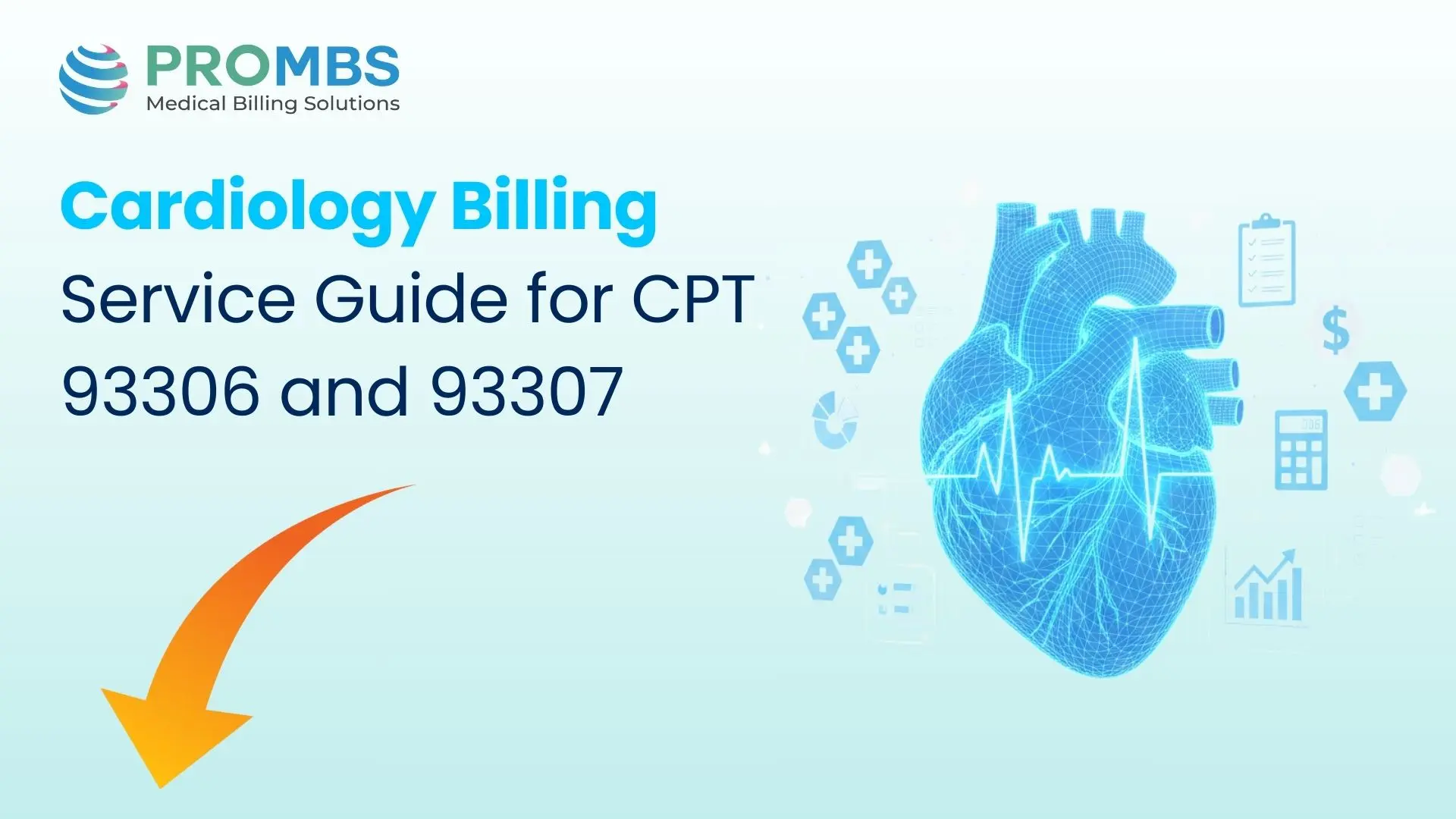Wheezing is a high-pitched whistling sound that occurs when airflow through the respiratory tract becomes partially obstructed. It is a clinical symptom, not a standalone disease, but one that often signals conditions such as asthma, COPD, bronchitis, or congestive heart failure. According to the National Institutes of Health (NIH), more than 25 million Americans experience wheezing annually, making it a key diagnostic indicator across pulmonology and primary care.
From a billing perspective, identifying the icd 10 code for wheezing (R06.2) ensures that the underlying condition is properly documented, justified, and reimbursed under CMS medical necessity criteria. Since wheezing frequently appears in both acute and chronic respiratory encounters, coders must link it either to an acute presentation (e.g., bronchospasm) or a chronic respiratory disorder to meet payer coverage guidelines. The American Health Information Management Association (AHIMA) emphasizes that unspecified respiratory codes are among the top causes of claim rejections. Thus, when assigning R06.2, coders should ensure that the note reflects the anatomic site, etiology, and duration of symptoms, critical elements for compliance and reimbursement accuracy.
What Are the Common Causes and Symptoms of Wheezing?
Clinically, wheezing can arise from airway narrowing, inflammation, or mucus plugging. The Mayo Clinic and American Lung Association (ALA) note that the symptom typically presents with shortness of breath, chest tightness, and audible breath sounds during exhalation. For medical coders, the documentation must go beyond “wheezing present.” It should specify whether the symptom is inspiratory, expiratory, or bilateral and whether it is acute or recurrent. Payers such as Aetna and Cigna require this level of detail to validate both diagnostic testing (CPT 94010, spirometry) and treatment codes (94640, nebulizer therapy).
| Underlying Condition | Example Documentation Phrase | Billing/Compliance Context |
|---|---|---|
| Asthma (J45.909) | “Patient presents with expiratory wheezing and shortness of breath during exertion.” | Requires linkage to asthma code per CMS LCD L34566. |
| Acute Bronchitis (J20.9) | “Wheezing noted with productive cough and diffuse rhonchi.” | Aligns with AHA Coding Clinic standards for symptom coding. |
| COPD Exacerbation (J44.1) | “Bilateral wheezing secondary to chronic obstructive airflow limitation.” | Covered under NCD 240.2. |
| Heart Failure (I50.9) | “Cardiac wheeze noted; bibasilar rales on auscultation.” | Must pair with cardiac diagnosis as per AHA heart failure guidelines. |
This structured documentation ensures that wheezing is not misclassified as a primary diagnosis when it is secondary to a respiratory or cardiac condition. Accurate linkage between symptoms and underlying disease protects claim integrity and aligns with payer logic. Before coding, the provider’s note must specify duration, laterality, and context (e.g., “nocturnal wheezing” or “exercise-induced”), which are essential details for selecting R06.2 accurately.
Did You Know?
According to the Centers for Disease Control and Prevention (CDC), wheezing is documented in nearly 45% of all acute respiratory visits, yet 14% of related claims are denied due to missing secondary codes for causative conditions, a clear indicator that coders must always link symptom and etiology.
Understanding the ICD-10 Code for Wheezing?
The icd 10 code for wheezing is R06.2, classified under Symptoms and signs involving the circulatory and respiratory systems (R00–R09). This code represents a non-specific respiratory symptom and can be used when the cause of wheezing is undetermined or pending confirmation. However, per the ICD-10-CM Official Guidelines FY2025, R06.2 should not be the principal diagnosis if a more specific respiratory disorder is identified (e.g., asthma or bronchitis). It is most commonly reported in outpatient encounters, emergency visits, or follow-ups where providers are still evaluating the etiology. To ensure compliance, coders must differentiate R06.2 from related respiratory codes like R06.02 (shortness of breath) or R06.4 (tachypnea), as these codes are mutually exclusive under CMS NCCI edits.
| Code | Description | When to Use (Linked Guidance) |
|---|---|---|
| R06.2 | Wheezing | Use when provider documents wheezing without a confirmed diagnosis; supported under CMS outpatient LCD L34566. |
| R06.02 | Shortness of breath | Use separately only when documented distinctly, per AHA Coding Clinic Q1 2024. |
| J45.909 | Unspecified asthma | Use as primary if asthma confirmed, with R06.2 as secondary. |
| J44.1 | COPD with acute exacerbation | Assign as primary when wheezing occurs secondary to COPD per GOLD Guidelines. |
Appropriate sequencing ensures that symptom and disease codes complement each other rather than conflict. Coders should review the EHR to verify whether the physician has specified a differential diagnosis before assigning R06.2 as a standalone code.
Did You Know? The Office of Inspector General (OIG) lists “symptom-only billing” as a high-risk audit area, especially when ICD-10 symptom codes like R06.2 appear without underlying conditions. Ensuring accurate sequencing reduces payer audit exposure by up to 35%, as shown in HFMA’s 2024 audit trends report.
Which ICD-10 Chapter Includes Wheezing and Why Does It Matter?
The icd 10 code for wheezing (R06.2) belongs to Chapter 18: Symptoms, signs, and abnormal clinical and laboratory findings, not elsewhere classified (R00–R99). This chapter is used when a diagnosis is not yet established or when wheezing represents a secondary manifestation of another condition. The Centers for Disease Control and Prevention (CDC) and AHIMA advise coders to use Chapter 18 codes only when the provider explicitly documents that no definitive diagnosis exists at the time of encounter. Once a cause (e.g., asthma or CHF) is determined, symptom codes like R06.2 should be replaced or sequenced secondary. For outpatient facilities and urgent care centers, proper chapter selection affects risk adjustment scores and denial trends, as payers use hierarchical condition categories (HCCs) derived from ICD chapters to evaluate case complexity.
Which CPT Codes Pair with the ICD-10 Code for Wheezing?
Wheezing may seem like a simple symptom, but in medical billing, it often triggers a web of diagnostic and therapeutic services that must be accurately coded to justify reimbursement. When a patient presents with wheezing, clinicians may perform pulmonary function testing, inhalation treatments, oxygen saturation checks, or even bronchodilator response evaluations. Each of these procedures is represented by a CPT (Current Procedural Terminology) code, and every one must be precisely linked to the icd 10 code for wheezing (R06.2) or an appropriate secondary respiratory diagnosis.
The American Medical Association (AMA) defines CPT codes as the language through which healthcare providers communicate the services performed to payers. However, linking these CPT codes to ICD-10 symptom codes like R06.2 must follow the medical necessity logic dictated by CMS National Coverage Determinations (NCDs) and payer-specific Local Coverage Determinations (LCDs). Incorrect or vague linkage is one of the most common causes of claim denials for outpatient respiratory services. In practice, when wheezing is the documented finding, payers expect diagnostic correlation, such as spirometry confirming airflow limitation or nebulizer therapy administered for airway obstruction. The coder’s responsibility is to ensure that each CPT code used to describe these services is directly supported by the physician’s documentation in the EHR and paired with R06.2 or another validated respiratory diagnosis (e.g., J45.909 for asthma or J44.1 for COPD with exacerbation).
| CPT Code | Procedure Description | Medical Necessity Link (with Authoritative Source) |
|---|---|---|
| 94010 | Spirometry, including graphic record | Justified when documentation mentions wheezing, bronchospasm, or airway obstruction per ATS/ERS Pulmonary Function Testing Guidelines. |
| 94060 | Bronchodilation responsiveness study (pre- and post-bronchodilator spirometry) | Covered under CMS NCD 240.2 when used to assess reversibility of wheezing. |
| 94640 | Inhalation treatment for acute airway obstruction (e.g., nebulized albuterol) | Must reference “wheezing or bronchospasm improved post-treatment” per AHA Coding Clinic. |
| 94760 | Pulse oximetry, single measurement | Appropriate when wheezing is associated with hypoxia or respiratory distress; supported by CMS LCD L33415. |
| 99213 | Office or outpatient visit, established patient | Requires auscultation findings (e.g., “expiratory wheeze noted in bilateral lung fields”) and management plan referencing inhalation therapy. |
These codes represent both diagnostic and therapeutic services integral to evaluating and managing patients with wheezing. The choice of CPT code depends on whether the encounter is diagnostic (identifying airflow limitation) or therapeutic (treating the obstruction). For example, if a provider documents “acute expiratory wheezing with dyspnea; nebulizer therapy administered,” the appropriate pairing would be R06.2 with CPT 94640, and possibly 94760 if oxygen saturation was measured before and after treatment. Similarly, if spirometry or bronchodilator response testing was performed to quantify obstruction, R06.2 with CPT 94010 or 94060 would be correct. Accurate CPT-ICD pairing is also vital for meeting payers’ pre-authorization and audit requirements. The Healthcare Financial Management Association (HFMA) notes that 22% of outpatient respiratory claim denials stem from improper ICD-CPT linkage, primarily where the provider documented “wheezing” but did not connect it to a specific service outcome.
Every CPT service tied to R06.2 must be justified in the narrative, not merely listed. A compliant note should describe the symptom (wheezing), the clinical reasoning for performing the procedure (to assess airflow obstruction or treat bronchospasm), and the result or patient response. This documentation-driven linkage converts a simple claim into an audit-ready submission that satisfies both CMS and AHIMA documentation integrity standards.
Did You Know?
The Healthcare Financial Management Association (HFMA) found that 19% of denied respiratory claims lacked a clear ICD-CPT linkage, with R06.2 among the most misused codes due to vague documentation such as “respiratory distress” without qualifying context.
How Should Documentation Be Structured to Avoid Denials?
Every respiratory claim involving the icd 10 code for wheezing must be clinically specific, compliant, and defensible. The CMS CERT Program reports that documentation errors, especially absent diagnostic context, remain a major cause of outpatient denials.
| Documentation Gap | Payer Denial Reason | Prevention Strategy (Linked Guidance) |
|---|---|---|
| No identified cause of wheezing | Insufficient medical necessity for testing or treatment. | Document potential etiology per AHIMA documentation standards. |
| Missing auscultation findings | Payers require evidence of wheeze presence under CMS LCD L34566. | Include “wheezing noted on expiration at bilateral lower lobes,” supported by CMS LCD L34566. |
| Failure to link CPT code | CPT 94640 or 94010 billed without diagnosis code linkage. | Use appropriate CPT-ICD crosswalks verified by AMA CPT Assistant. |
| Lack of symptom duration | Claim flagged for “acute vs chronic” uncertainty. | Add time frame, e.g., “episodic nocturnal wheezing for 2 weeks,” per AHIMA guidance. |
Providers can avoid most denials by clearly documenting the clinical presentation and course of care. ProMBS ensures each encounter is validated through automated ICD-CPT cross-checks and payer-specific LCD logic, guaranteeing every claim aligns with medical necessity standards.
Did You Know?
The CMS 2024 Payment Integrity Report revealed that 34% of denied outpatient respiratory claims lacked proper documentation linking wheezing to a defined condition, costing providers over $210 million in lost reimbursements.
Why Should Providers Partner with ProMBS for Wheezing Billing?
Coding symptoms like wheezing (R06.2) might appear simple, but without context, they can lead to denials or compliance flags. That’s where ProMBS excels. Our compliance-driven medical billing framework ensures that every icd 10 code for wheezing claim meets the highest payer standards. We integrate EHR-based documentation audits, ICD-CPT cross-validation, and LCD-specific claim editing to prevent rejections before submission.
ProMBS also supports clinical teams through training modules built around AHIMA and OIG compliance benchmarks, helping providers capture symptom specificity and medical necessity clearly. Each claim we process is audit-ready, accurately linked, and optimized for both payer compliance and revenue protection. From spirometry (CPT 94010) to nebulizer therapy (CPT 94640), our coding accuracy ensures seamless reimbursement for respiratory encounters. At ProMBS, we go beyond claim management, we help practices master documentation precision, compliance readiness, and performance-based billing. When accuracy defines compliance and compliance drives trust, ProMBS remains your authority in transforming respiratory billing into reliable, audit-secure revenue.



